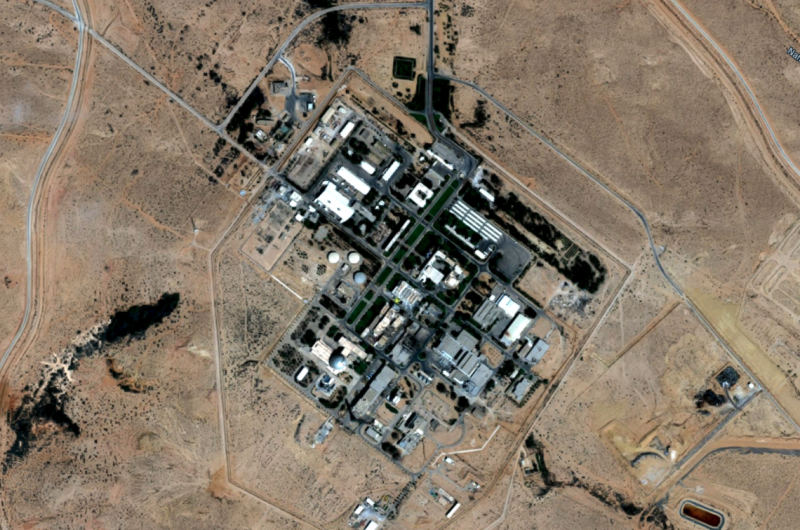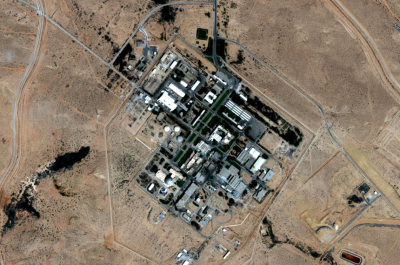The Dimona nuclear reactor is located in Israel. A recent report from Haaretz revealed that a hacking group infiltrated the computers and servers of the Israeli nuclear reactor. The group, known as "Anonymous," claimed to have accessed sensitive information, pointing to the ongoing secrecy surrounding Israel's nuclear program, which has been in existence for over 65 years.
Initially, Israel portrayed the Dimona reactor as a textile factory before later admitting it served "peaceful research purposes." Israel has refrained from signing the Nuclear Non-Proliferation Treaty, thus deceiving numerous international observers regarding its nuclear capabilities. The Dimona reactor is considered the largest nuclear project in the Middle East.
During a CNN interview in May 2018, Israeli Prime Minister Benjamin Netanyahu was asked directly if Israel possessed nuclear weapons. He responded ambiguously, stating, "We have always said we will not be the first to introduce nuclear weapons in the Middle East," suggesting Israel's intent to maintain secrecy regarding its nuclear arsenal.
Following the establishment of the Israeli Atomic Energy Commission in 1952, after Israel occupied Palestinian territories in 1948, efforts accelerated to extract uranium from the Negev Desert. Israel managed to develop a method for producing heavy water, vital for its nuclear endeavors.
Negotiations with France led to an agreement in September 1957 to build the Dimona reactor, claiming it was for peaceful purposes with French scientific assistance. Dimona is approximately 90 kilometers from Jerusalem and 35 kilometers from Jordan's border, slightly farther from Egypt's border than 65 kilometers.
The situation at this reactor was kept in extreme secrecy, indicating that Israel's nuclear program aimed to develop weapons rather than peaceful applications. By the late 1950s, Dimona had a significant French population, and schools were established for them. However, the workers were prohibited from direct communication with relatives in France.
The U.S. was aware of developments at Dimona, and during John F. Kennedy's presidency, American inspectors were sent to verify the reactor's peaceful claims. Israel had attempted to obscure the project, falsely claiming it was a textile facility, but U.S. intelligence reports revealed that the Dimona reactor was operating at maximum capacity by January 1963.
Reports indicated it could produce enough plutonium annually for one or two nuclear weapons. Consequently, U.S. officials insisted on regular inspections of the facility after Israeli Prime Minister Levi Eshkol allowed American agents to visit in June 1963.
However, Israel refused International Atomic Energy Agency (IAEA) inspections and allowed only U.S. physicists without their equipment or sample collection capabilities. Even places within the nuclear complex were concealed, with false walls built around elevator shafts leading to secret sites.
In the years following the 1968 Nuclear Non-Proliferation Treaty, the narrative surrounding Israel's nuclear armament began to align more closely with Israeli claims, with Tel Aviv assuring Washington it would not be the first to introduce nuclear weapons in the region.
The assassination of President John F. Kennedy in November 1963 marked a turning point in U.S. policy regarding Israel's nuclear program, with the Johnson administration opting not to pressure Israel to sign the non-proliferation treaty. Later, in September 1979, a U.S. satellite captured evidence of a nuclear test by Israel in collaboration with South Africa.
The situation remained under wraps during successive U.S. administrations until a significant leak in 1986, when Mordechai Vanunu, a technician at the Dimona nuclear complex, disclosed the secrets of Israel's nuclear program to the world. He described how he sought to inform the global community since no one was discussing what occurred at the reactor.
Vanunu, who lost his job at Dimona in 1985, went public revealing that the reactor had capacity for 26 megawatts, with speculation that it might have been enhanced to approximately 150 megawatts. Reports indicated it could produce around 40 kilograms of plutonium annually, enough for ten nuclear bombs.
Recent estimates suggest Israel possesses at least 80 nuclear warheads, possibly up to 200, as efforts to develop Dimona continue. Satellite images show digging near the facility, potentially several floors deep, indicating ongoing enhancements. Israel has fortified its nuclear arsenal by creating an underground command center near Jerusalem.
Israel also acquired German-made submarines capable of carrying nuclear missiles, enhancing its second-strike capability. The first three submarines were obtained in the 1990s, with additional ones supplied later, bolstering Israel's nuclear delivery systems.
With renewed threats from Israeli officials regarding potential nuclear use during military operations in Gaza since October 7, 2023, concerns about a humanitarian disaster have heighted, echoing risks similar to the Chernobyl disaster of 1986.
Israeli scientists, including a professor who contributed to the reactor's construction, have urged for its closure, citing its advanced age and potential risks.




